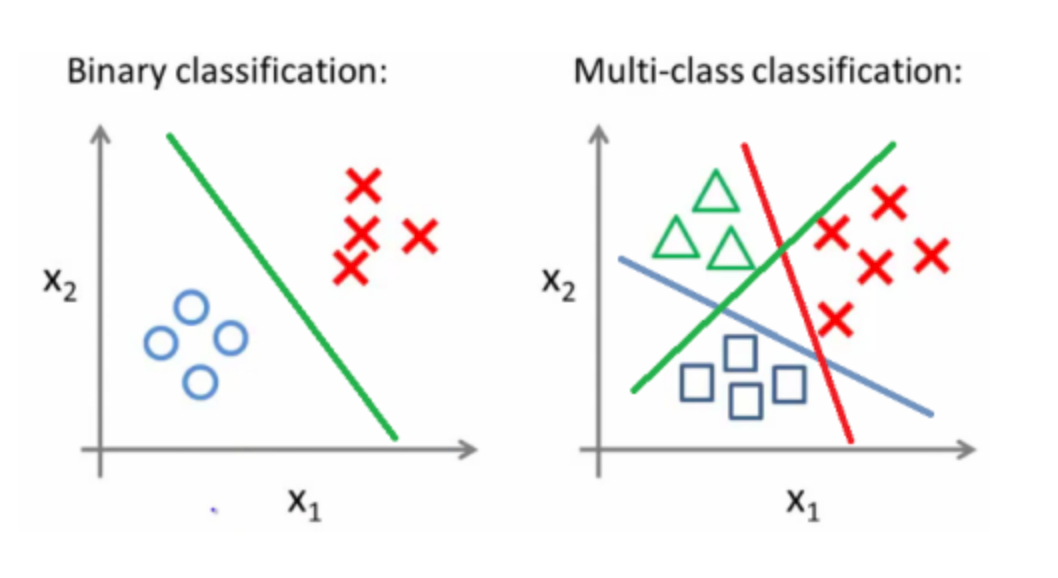Multiclass Classification in Python: Techniques, Examples, and Best Practices
 Prakhar Kumar
Prakhar Kumar
Introduction: Multiclass classification is a fundamental task in machine learning that involves predicting the correct class label from multiple possible classes for a given input. In this blog post, we'll delve into various techniques for implementing multiclass classification in Python, provide practical examples, and discuss best practices for model evaluation and improvement.
Understanding Multiclass Classification: Multiclass classification is different from binary classification as it involves predicting one class label among multiple classes. It is commonly used in applications such as image recognition, sentiment analysis, and document categorization, where the input can belong to more than two categories or classes.
Python Libraries for Multiclass Classification: Python offers a wide range of libraries and tools for implementing multiclass classification algorithms:
scikit-learn: scikit-learn provides a comprehensive set of algorithms and tools for multiclass classification, including Support Vector Machines (SVM), Random Forests, Gradient Boosting, and more.
TensorFlow and Keras: TensorFlow and Keras offer deep learning frameworks with built-in support for multiclass classification using neural network architectures like Convolutional Neural Networks (CNNs) and Recurrent Neural Networks (RNNs).
XGBoost: XGBoost is a popular gradient boosting library that excels in multiclass classification tasks by combining multiple weak classifiers.
NLTK: NLTK can be used for text classification tasks involving multiple classes, with techniques like Naive Bayes and Maximum Entropy classifiers.
Techniques for Multiclass Classification:
One-vs-Rest (OvR) Strategy: Decomposes the multiclass problem into multiple binary classification problems, where each class is treated as a separate binary classification task.
One-vs-One (OvO) Strategy: Constructs binary classifiers for each pair of classes and uses majority voting to determine the final class label.
Multinomial Logistic Regression: Directly models the probability distribution over multiple classes using softmax regression.
Ensemble Methods: Combines multiple base classifiers to improve classification accuracy, such as Random Forests, Gradient Boosting, and Voting classifiers.
Python Implementation Examples:
Example 1: Multiclass Classification with scikit-learn and SVM
pythonCopy codefrom sklearn.datasets import load_iris
from sklearn.model_selection import train_test_split
from sklearn.svm import SVC
from sklearn.metrics import accuracy_score
# Load the Iris dataset
iris = load_iris()
X = iris.data
y = iris.target
# Split data into training and testing sets
X_train, X_test, y_train, y_test = train_test_split(X, y, test_size=0.2, random_state=42)
# Train an SVM classifier
svm_classifier = SVC(kernel='linear')
svm_classifier.fit(X_train, y_train)
# Make predictions on the test set
y_pred = svm_classifier.predict(X_test)
# Evaluate accuracy
accuracy = accuracy_score(y_test, y_pred)
print("Accuracy:", accuracy)
Example 2: Multiclass Text Classification with NLTK and Naive Bayes
pythonCopy codeimport nltk
from nltk.corpus import movie_reviews
from sklearn.feature_extraction.text import CountVectorizer
from sklearn.naive_bayes import MultinomialNB
from sklearn.metrics import classification_report
# Load movie reviews dataset from NLTK
nltk.download('movie_reviews')
documents = [(list(movie_reviews.words(fileid)), category)
for category in movie_reviews.categories()
for fileid in movie_reviews.fileids(category)]
# Preprocess text data and extract features
vectorizer = CountVectorizer()
X = vectorizer.fit_transform([" ".join(doc) for doc, _ in documents])
y = [category for _, category in documents]
# Split data into training and testing sets
X_train, X_test, y_train, y_test = train_test_split(X, y, test_size=0.2, random_state=42)
# Train a Multinomial Naive Bayes classifier
nb_classifier = MultinomialNB()
nb_classifier.fit(X_train, y_train)
# Make predictions on the test set
y_pred = nb_classifier.predict(X_test)
# Evaluate classification report
print("Classification Report:")
print(classification_report(y_test, y_pred))
Example 3: Multiclass Image Classification with TensorFlow and CNN
pythonCopy codeimport tensorflow as tf
from tensorflow.keras.datasets import cifar10
from tensorflow.keras.models import Sequential
from tensorflow.keras.layers import Conv2D, MaxPooling2D, Flatten, Dense
# Load the CIFAR-10 dataset
(X_train, y_train), (X_test, y_test) = cifar10.load_data()
# Normalize pixel values
X_train, X_test = X_train / 255.0, X_test / 255.0
# Define a Convolutional Neural Network (CNN) model
model = Sequential([
Conv2D(32, (3, 3), activation='relu', input_shape=(32, 32, 3)),
MaxPooling2D((2, 2)),
Flatten(),
Dense(128, activation='relu'),
Dense(10, activation='softmax')
])
# Compile the model
model.compile(optimizer='adam',
loss='sparse_categorical_crossentropy',
metrics=['accuracy'])
# Train the model
model.fit(X_train, y_train, epochs=10, validation_data=(X_test, y_test))
# Evaluate accuracy on test set
test_loss, test_acc = model.evaluate(X_test, y_test)
print("Test Accuracy:", test_acc)
Best Practices for Multiclass Classification:
Data Preprocessing: Normalize and preprocess input features, handle missing values, and encode categorical variables appropriately.
Feature Engineering: Select relevant features, perform dimensionality reduction if necessary, and extract meaningful features from text or image data.
Model Selection: Choose appropriate algorithms and models based on the nature of the data and problem, considering factors like scalability, interpretability, and computational resources.
Hyperparameter Tuning: Fine-tune model hyperparameters using techniques like grid search, random search, or Bayesian optimization to improve model performance.
Model Evaluation: Evaluate model performance using appropriate metrics such as accuracy, precision, recall, F1-score, and confusion matrix. Consider cross-validation for robustness assessment.
Conclusion: Multiclass classification is a crucial machine learning task with diverse applications. Python provides powerful libraries and techniques for implementing multiclass classification algorithms effectively. By understanding different strategies, experimenting with examples, and following best practices, developers can build accurate and robust multiclass classification models for various real-world scenarios.
Subscribe to my newsletter
Read articles from Prakhar Kumar directly inside your inbox. Subscribe to the newsletter, and don't miss out.
Written by
